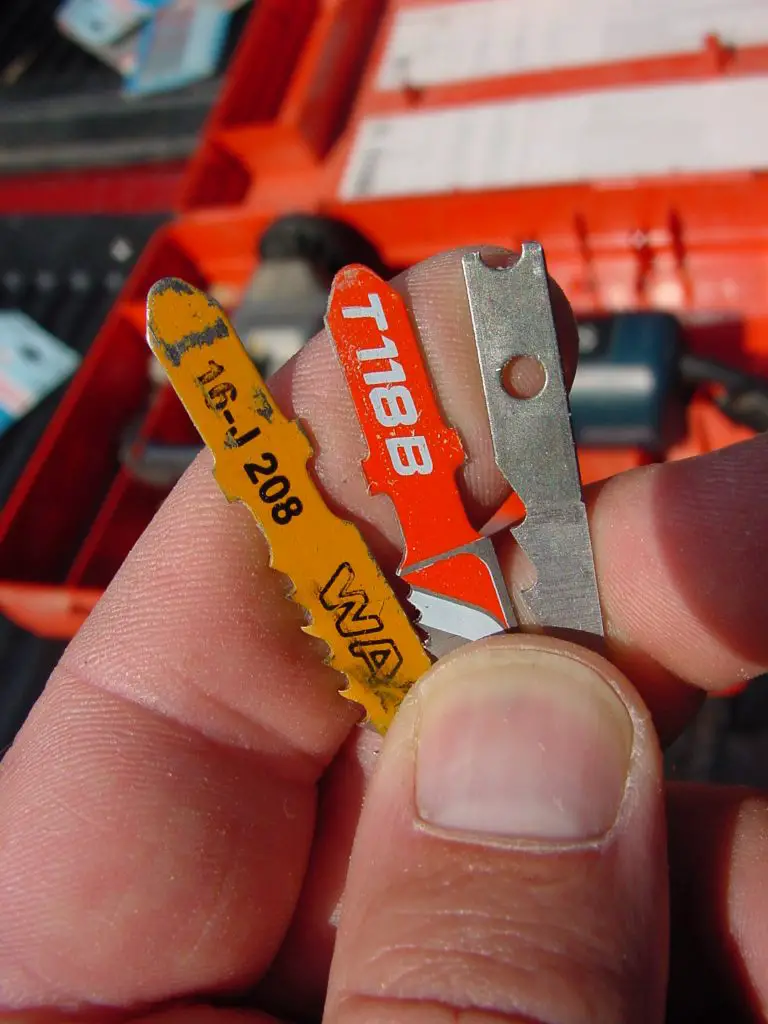Q: What should I look for when choosing a new jigsaw? I have an old corded model but it cuts slowly and the edges it creates are not always square. Would my old saw do better with different blades? All the specs and details of new models confuse me.
- Reading time = 3 minutes
- Video watch time = 2 minutes
A: From the photos you sent I can see that part of the problem is your saw. Today’s best blades won’t fit what you’ve got and that’s a shame. There are some amazing jigsaw blades out there now.
And yes, all those specs on the new machines you’ve been looking can be confusing, but you can safely ignore most of them. The approach I recommend is to simply ignore the confusing stuff (it’s mostly marketing hype anyway) and look at just two parameters when it comes to choosing a jigsaw: price and brand.
At the moment, $200 is the lowest threshold for a nice jigsaw that will last forever and make great cuts. Anything cheaper than that is probably a light-duty saw similar in capabilities to the one you have now. If you spent a minimum of $200 on a Bosch, DEWALT or Milwaukee you’d get a very nice saw that delivers great value. But like I said, you need to use the right blade for the job to get the most from your new jigsaw. Interestingly, when I bought my first pro-grade jigsaw in the late 1980s, it costs $200 – roughly equivalent to $463 today. This is one of many examples of how the cost of great tools is in a slow, steady decline.

When you get a good quality jigsaw you also have access to terrific blades with the right kind of blade attachment systems. The best blades are T-shaped at the top, and sometimes called “Bosch style” because that company invented the configuration. Another question to ask yourself is corded versus. You’ll need to decide if cordless convenience is worth the $100 or so extra that this type costs. For something like a drill cordless is certainly worth it, but perhaps not as much for a jigsaw. Even with the best blade in place, there’s still a good chance that jigsaw cuts aren’t square. It’s easy to make the mistake of applying pressure to the left or right side of the saw as you’re cutting. Make sure there’s no side pressure on the blade and your cuts will be much more square.
All the best jigsaws have an interesting feature that requires further explanation. I made the video below in 2009 to explain how orbital blade action works on jigsaws and how to make proper use of this key feature of high-end jigsaws. It’s a great thing that lets your saw cut much more quickly when fine, splinter-free results don’t matter.
 Did you learn something useful from this article and video? I hope so. Please consider helping me produce this kind of content by clicking the “buy me a coffee” button below. It’s a safe, simple and fast way to make a contribution. Thanks to all who are supporting what I do.
Did you learn something useful from this article and video? I hope so. Please consider helping me produce this kind of content by clicking the “buy me a coffee” button below. It’s a safe, simple and fast way to make a contribution. Thanks to all who are supporting what I do.




